Veteran Shaft animator Kazuya Shiotsuki, freelance screenwriter Keiichirou Ouchi, and TBS producer Junichirou Tanaka came to Washington DC for Otakon last week – July 2023. They brought with them:
- two decades of stories
- a MacBook with the Quintessential Quintuplets TV Special
- sweet 16:9 business cards with taps on the top like animation paper

Shiotsuki has no atwiki and few credited cuts to his name, but his career at Shaft started just before Mitsutoshi Kubota took over as president and, together with Akiyuki Shinbou, reshaped the studio into one of the industry’s most enduring institutional experiments. With his view over the sweep of Shaft’s trajectory to the present day, if ever there were an artist_unknown at the studio to ask questions, it’d be him. I’d heard stories about Junichirou Tanaka’s longstanding relationship with the studio and its president as well, and of course Keiichirou Ouchi is a fellow writer and someone who has traveled all across the industry.
Otakon was kind enough to arrange for me to sit down and talk with them alongside an interpreter to compensate for my questionable listening comprehension, and they were in turn kind enough to accept.
Nate A.M. (>>Nate): First of all, I’d like to ask Tanaka-san a bit about how Shaft came to lead production of the specials. After their assistance on Episode 11 of the first season, I imagine President Kubota was pretty near the top of your list of people to ask, but how did those discussions go?
[The interpreter is working through how exactly to word the question in Japanese aloud and mentions EP11, and Tanaka assumes that’s what I’m asking about. I’m curious if he’ll elaborate on the story and don’t correct him.]
Junichirou Tanaka (>>Tanaka): The first season was produced at Tezuka Production, but the schedule got all backed up. Things were looking bad. Ah, but I do want to make it clear that this is not the fault of Tezuka Productions – this was totally on me for not bringing them the work early enough. (Laughs)
So I phoned around to various other companies so that I could lighten the load for Tezuka. That’s my role as a producer. Now Kubota-san at Shaft had done plenty of work for us for a long time, and he agreed to do it on the condition that it’d just be the key animation for the A-part.
Near the end of the year, with broadcast set to begin in January and drawing near, I had to go back to Shaft and beseech them:
[in a painful whisper]
“Mr. President…the A-part’s not enough…”
(everyone laughs)
-and asked if they could do the whole thing. Now Shaft and Tezuka Production were close going way back and have worked on several projects together, so Kubota-san got to talking with a producer at Tezuka he got along with named (Hiroshi) Oosawa-san, and so they kindly agreed “fine, we’ll do the whole thing.”
There was one additional benefit: there are other departments involved in anime production aside from just drawing the pictures, like compositing, and Shaft was able to contribute in those capacities as well. We were incredibly grateful.
Tanaka actually told this story once in a Livedoor interview. He said in that version that he asked Kubota “on his hands and knees” at a meeting over dinner. I almost asked if the story was true, but thought better of it. In any case, it’s nice to have a little more detail.
Nate: Anime is really something else.
(everyone laughs)
Next up, I’d like to ask Shiotsuki-san a bit about the character designs. I notice Katsumata-san from the first season is credited for the designs alongside you, so I assume that at least some of the characters are based on his settei. Can you talk a bit about the process of using existing designs when the original designer isn’t around to provide their own corrections anymore?
Tanaka: (to Shiotsuki) You discussed that with Katsumata-san, right?
Kazuya Shiotsuki (>>Shiotsuki): Originally we used the expression sheets from the second season as the base layer, and we basically used Katsumata’s designs, but Shaft’s approach to the characters was to return to the source material. We used the designs from the second season, but where we could use the source material, we reference that instead. For that reason, we have Katsumata-san’s drawings, and then we have various pictures from the source material, and those became our settei.
Nate: (perplexed aizuchi noises)
In that case…hmm…in that case as an animator however, was there anything you wanted to emphasize in terms of secondary motion, or shape, or line count?
Shiotsuki: Well the places in which we wanted to get back to the source material were in elements like highlights in the hair, but the biggest change we made wasn’t in the drawings, but in the color. In regard to the color, it was really Kubota-san who-
Associate-san: -the president.
Shiotsuki: The president, yeah.
Nate: Yeah, yeah.
Shiotsuki: He involved himself quite deeply, and on the key visuals and such, he’d be standing beside me going
“Nope that’s not it…
…that’s not it…
…that’s not it…”
-redrawing the illustrations, checking the colors with him at my side. That was the biggest change.
Shiotsuki elaborated a bit on the character designs after the premiere and showed examples of his corrections. He claims his primary role really was to correct the character drawings to look more like the manga. Here are a few that I’ve marked up:
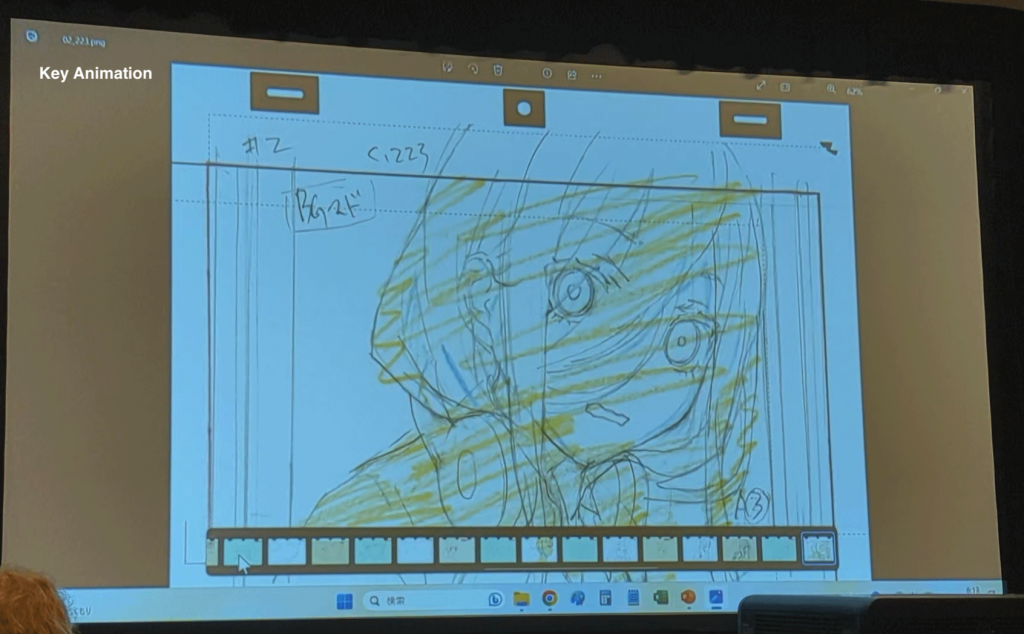


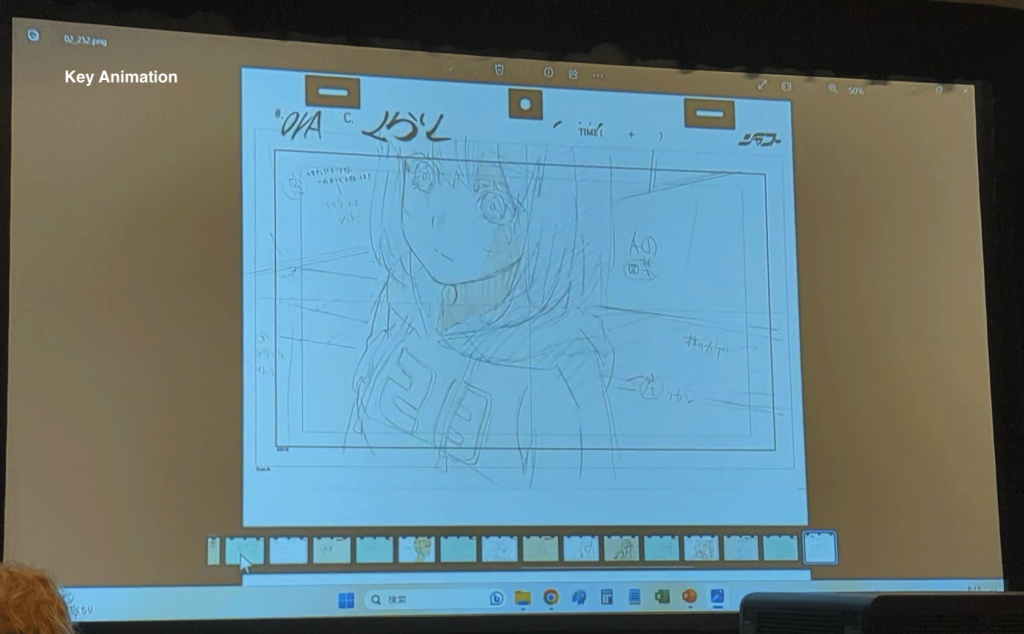
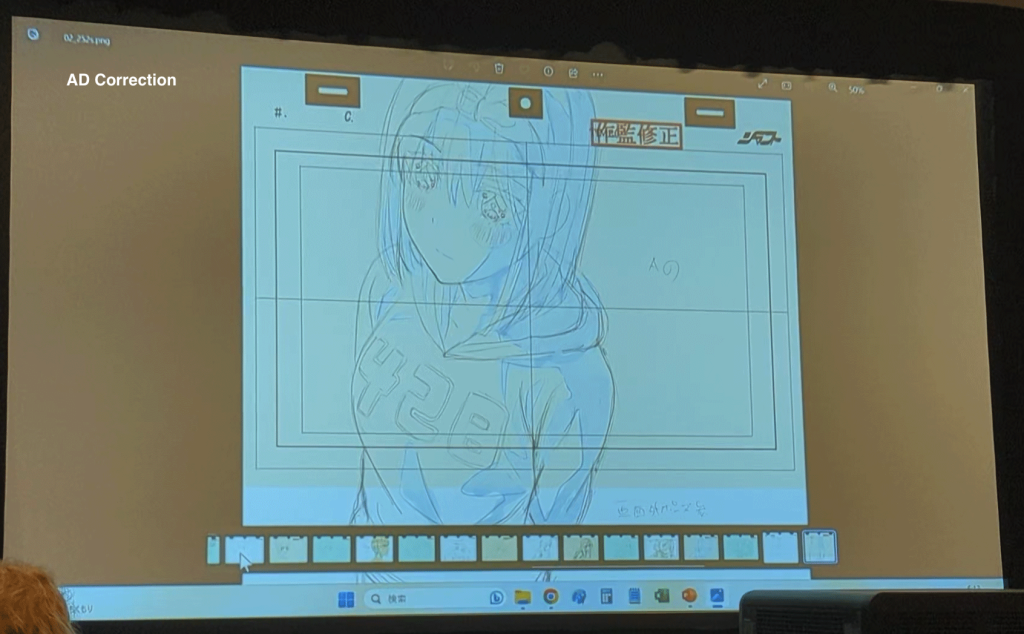
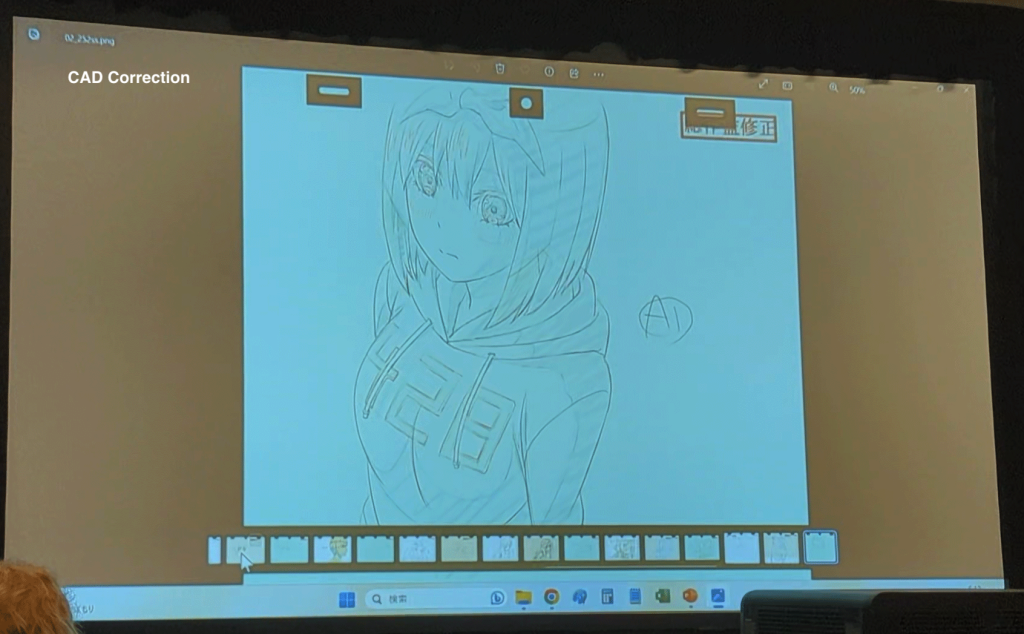
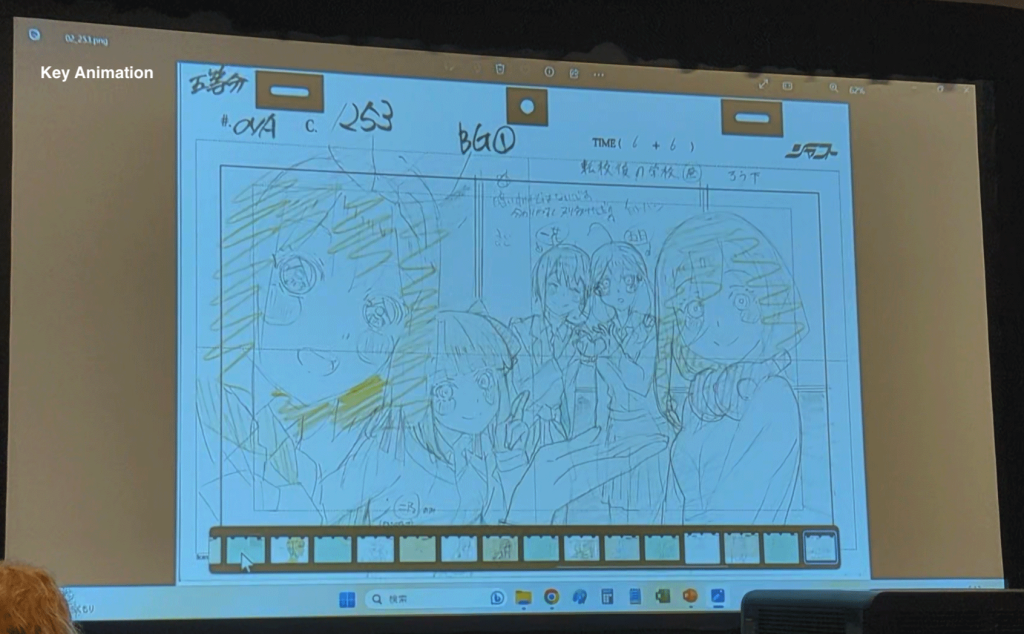
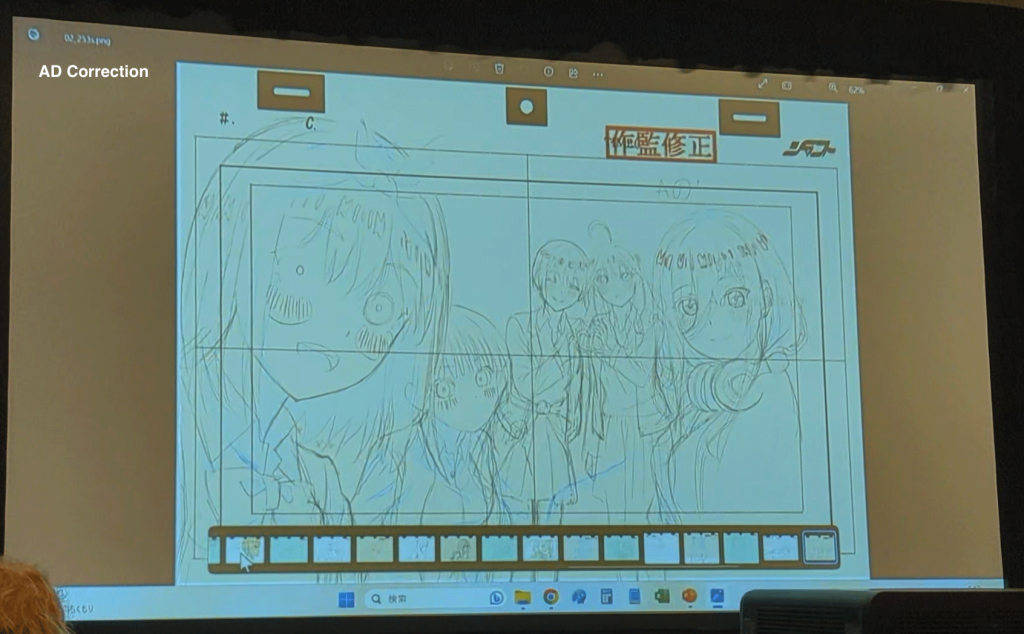
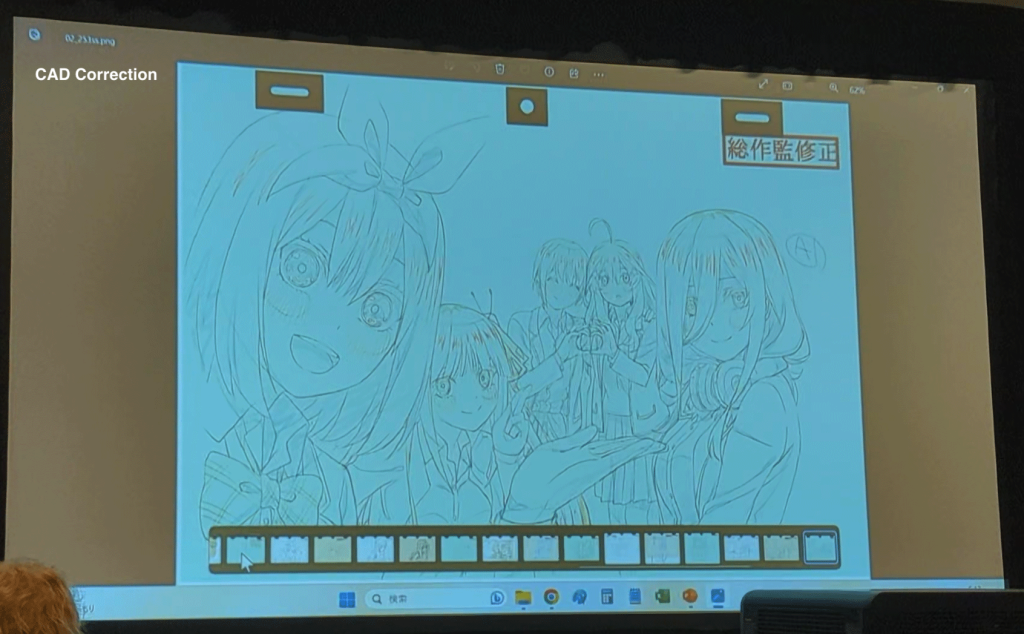
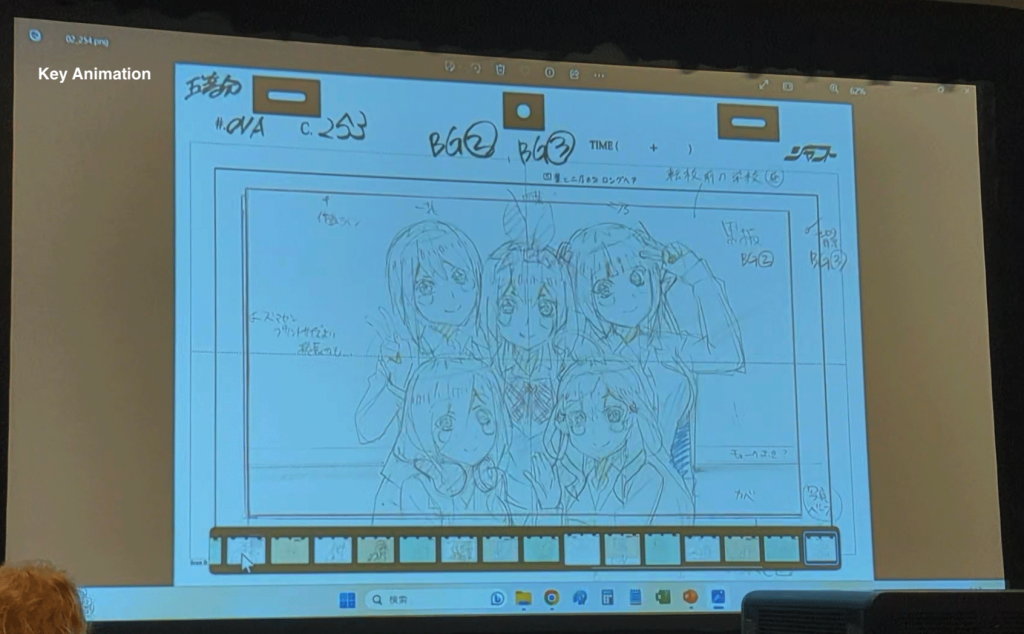
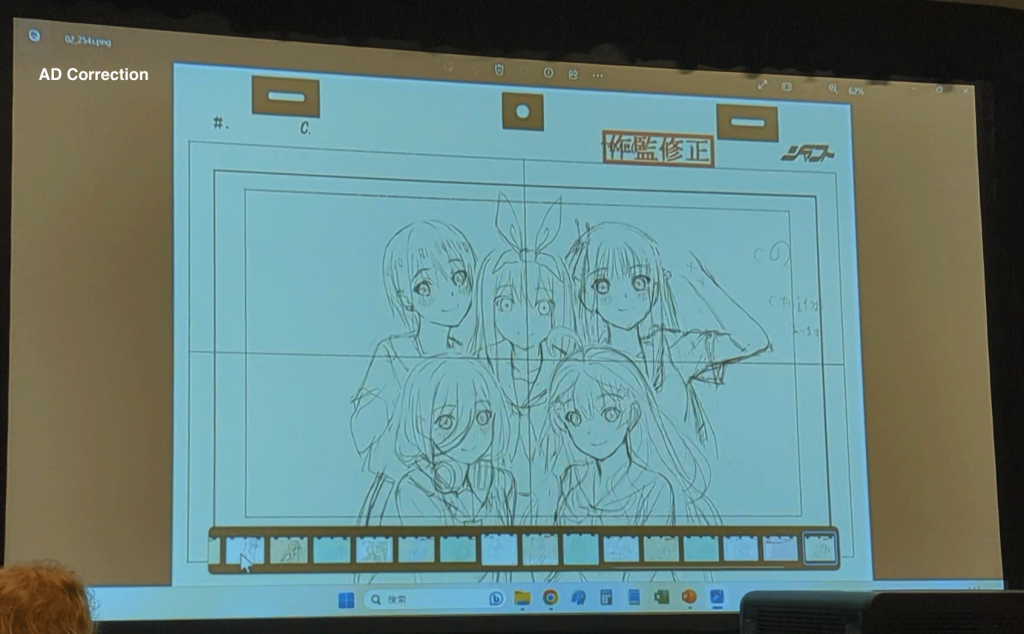
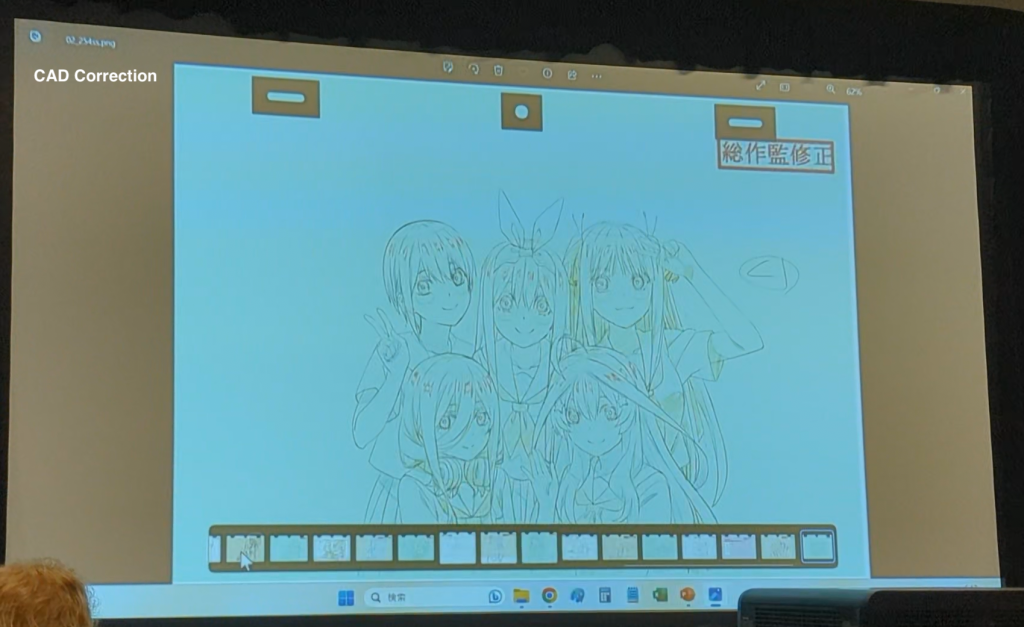
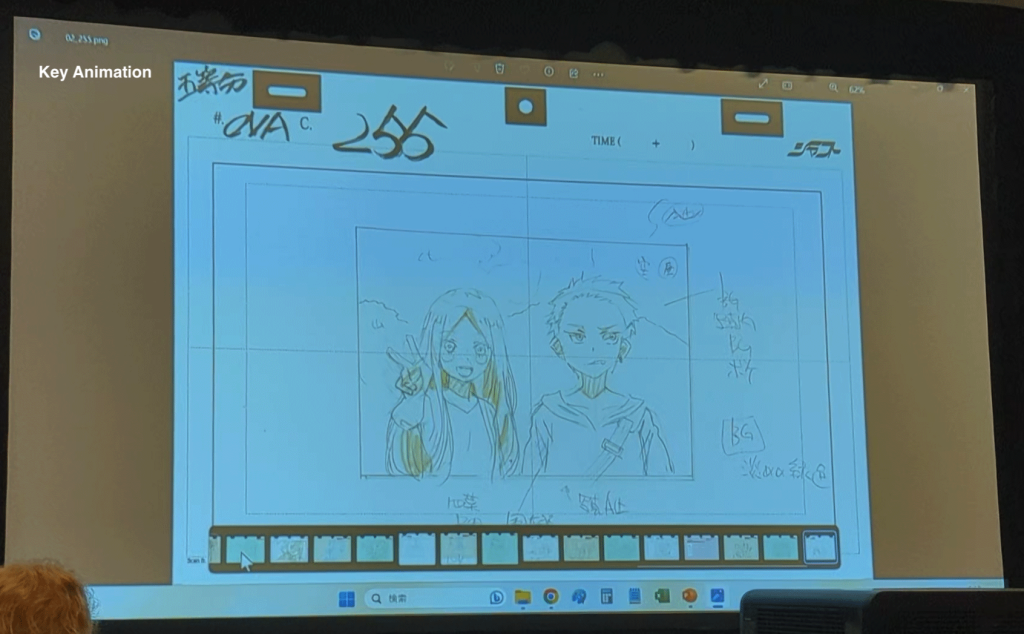

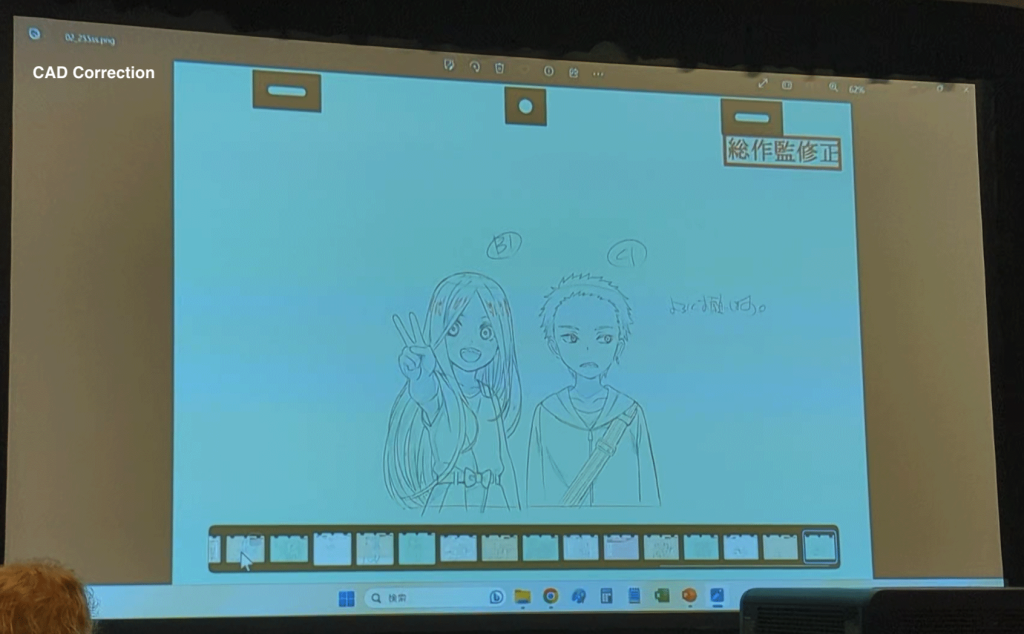
As you can see, some of the corrections at both the animation director and chief animation director stages are quite dramatic – basically retakes. There are many, many such cases in anime, but I’d still keep in mind that some of these are big highlight shots where I’m sure the upper staff felt the character drawings needed to be especially keen, and moreover that these were chosen specifically to show what the correction process is like. Nonetheless, I think it’s safe to say that Shiotsuki has been quite busy.
As for what Shiotsuki was correcting, you can very clearly see his corrections to the highlights, but I’d also draw attention to the eyes. The eyes are very important to the designs, because as Shiotsuki pointed out at the Q&A, the girls’ facial structures and bodies really are the same underneath all the hair and accessories. That’s why he says that the hardest part of drawing (and correcting) these characters are the colors and the eyes – which is also why he considers Itsuki the hardest.
What’s harder to see in these individual drawings is motion. None of the Quints anime productions have been able to really support consistently specific character animation, but you can see that Shiotsuki is still tweaking the body language here and there. It’s one of the things I’d have liked to follow up on if I had the time.
Nate: Speaking of President Kubota, if I’m not mistaken, your career at Shaft began just before he took over the studio-
(Shiotsuki cringes and laughs)
-and he began some pretty radical changes. What were those early transition days like from the perspective of a new inbetweener?
Shiotsuki: (laughing) oh god there’s so much I don’t know I can say or not…
Nate: (laughing) sorry, sorry~
[at this point there’s chaos in the recording]Shiotsuki: Well the biggest thing of course is that he brought director (Akiyuki) Shinbou along. That was really all President Kubota.
Associate-san: As an inbetweener?
Shiotsuki: As an inbetweener too. The mindset of our work just flipped overnight. Even 17 years later, the memories are insane. (laughs) -because of the different values he brought in. So it was a huge change in focus for inbetweeners and animators and everyone else like me who had previously come into the studio.
Nate: We actually had a chance to talk to chat with a fairly new animator named Ryo Shimura–
Shiotsuki: Eh?? With Shimura-kun??
Nate: Yep!
Shiotsuki: Alright alright go on.
Nate: -how would you compare the culture among the new talent at Shaft compared to when you first joined? Are there any animators you’ve gotten to know particularly well?
Shiotsuki: Our generation are all the Children of Shinbou, for better or worse (laughs), so our mindset is very close to his own. In other words we’re motivated by the values on display in Shinbou’s work. Nowadays the kids haven’t had a chance to be involved with Shinbou-san, they’re more involved with (Yasuomi) Umetsu-san – Umetsu-san and (Shouji) Saeki-san are the directors who-
Tanaka: Saeki-san is-
[crosstalk]Shiotsuki: Really it’s just Saeki-san. (Laughs)
Tanaka: The director of Assault Lily and such.
Shiotsuki: He’s the director I worked with on Luminous Witches recently…and like his values are pretty different. I’ve been thinking that this is something that our generation needs to keep in mind.
Yasuomi Umetsu has been directing a project at Shaft for years now, but production has been on hold for unclear reasons. This is apparently why they haven’t taken the lead of as many projects lately – aside from the exodus of the old guard. In the meantime, he’s been involved with a number of Shaft projects, including alongside Shiotsuki. In fact, he’s credited for KA in the Quintessential Quintuplets TV Special OP – confirmed on his blog even before I saw it in the staff roll. His involvement with Shaft is another thing I wanted to ask about. However…
Nate: Unfortunately I’m afraid we’re out of time. Thank you very much for agreeing to this interview. There are many things I’m curious about, so my apologies if I went a bit overboard with the questions.
Shiotsuki: It’s quite alright. I’m curious, how on Earth did you come to know Shimura-san?
Nate: Ah, a friend-of-a-friend.
Shiotsuki: Ahh, okay, I see!
There are many things that we didn’t have time to talk about, including a whole line of questions for Keiichirou Ouchi, who I’m afraid got left out this time. Such is the fate of all writers. Luckily, that wasn’t the case at the screening and Q&A panel which took place shortly afterward.
The special itself is quite good. Hiroto Nagata’s opening is excellent, and I expect cuts from that will soon earn the prestigious distinction of being the first results for Quints when you search for it with order:score on the Booru. From a production perspective, perhaps the most troublesome cuts involved a certain scene on a swingset. According to Shiotsuki, the chains necessitated bringing in a “specialty animator” and resulted in an incredible amount of inbetween melt to clean up. Maybe GoHands were onto something with those chain textures.
I would’ve asked who this specialty animator was, but instead I wanted to follow up on something else I noted in the staff roll: the overseas freelance animators. During the Q&A section, I asked whether there was anything that Shaft as a studio or Shiotsuki as CAD tries to do to make sure remote workers are able to review corrections for their cuts. Shiotsuki replied that Shaft’s workflow is sufficiently digitized that they’re able to send them the corrections electronically without too much trouble. Heartening if true! Incidentally, the digitization of the production pipeline will also be a theme in my writeup on Trigger’s representatives at Otakon.
Regarding the character designs, I’m frankly not familiar enough with the manga to give detailed impressions, but the expressions in the A-part especially seemed to take influence not just from the source material but also from the Shinbou tradition. This isn’t anywhere even close to self-parody Shaft, but there are some pretty Shaft-like shot compositions and drawings to remind you who worked on it. I’d compare the approach quite favorably to Uchiage Hanabi, which had none of the Quints TV Special’s grace nor love of its source material.
The audience asked the trio a number of questions, including what got them into the anime industry. Tanaka jokes that he just went to sleep and woke up at TBS, but he cites Cowboy BeBop and Love Hina: certainly two powerful turn-of-the-millennium anime. Shiotsuki saw Princess Mononoke and reruns of Neon Genesis Evangelion. Ouchi, however, is here thanks to Aim for the Ace! Gunbuster. Now there’s a man of culture.
During the discussion, Shiotsuki did a live drawing over some rough genga he prepared, and as if to prove his point that the Quintuplets really are quintuplets underneath the hair and ribbons, he left it to the audience to decide which girl he should draw. Cosplayers came up front to rock-paper-scissors for the honor of their oshi, and Yotsuba won.
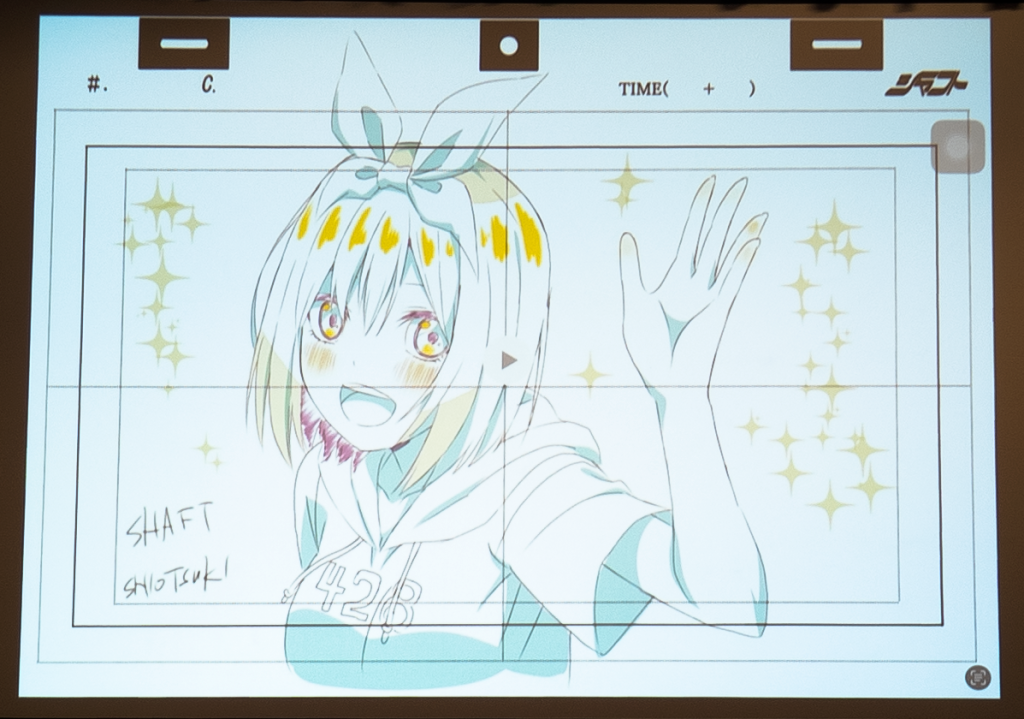
〜˚✧₊⁺˳༚ kira☆kira ₊˳˚༚☆⁺〜
Over the next few days, I’ll also post reports on Trigger and Orange’s activities at Otakon. I’m afraid I wasn’t able to get one-on-one interviews with Shunpei Gunyasu and Takuya Saitou, or Yoshihiro Watanabe and Shingo Kiyomiya, but I think there’s some interesting stuff to talk about regarding the new generation at Trigger Fukuoka and Orange’s continuing evolution. Please wait warmly.
Incidentally, I also recommend you read Sarca and Erich’s interview with the trio over on animecorner.
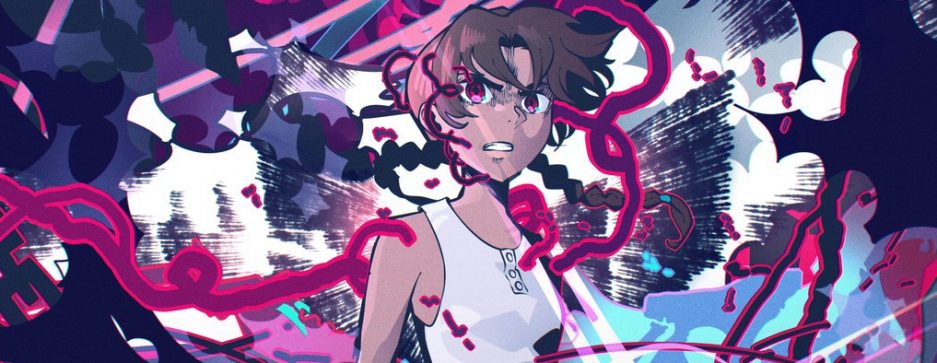
In the note that you’ve written talking about the Yasuomi Umetsu project that’s been on hold, what do you mean by the “the exodus of the old guard” ? I dont know much about any of this, but i’m very interested in knowing more about it.